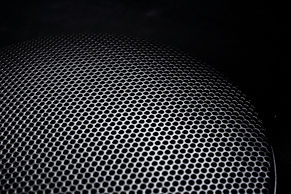


AMPLIFIERS
Adding an amplifier to your sound system provides two benefits over a basic car stereo setup: more power and better sound.
More power. If you have a quality aftermarket in-dash receiver, you may think you already have all of the power you need, especially if you're looking at an amp that has the same "spec" for power. Those specs, however, can be misleading, we call those specs WLS ratings. When lightning strikes.
Better sound. Because an amp only has only has one job to provide more clean power, engineers can use higher-end components and heat sinks. They can also locate sources of noise, such as the power supply, far from other circuits in the amp. This produces a cleaner, clearer sound so you won't have to crank the stereo up just to hear all the details in your music.
CLASSES
An amp's circuit design determines its class of operation. Class A amps sound great, but because of power inefficiency and high heat production they are not used often. Class AB amps are commonly used in vehicles, because they provide low distortion, good reliability, and reasonable efficiency. Class D amps produce less heat, require less current, perform more efficiently, and are smaller than Class AB amps, but they tend to have more distortion.
CHANNELS
Amps have one or more channels. A 1-channel (or mono) amp drives subwoofers and is usually Class D. A 2-channel amp will drive two speakers, or it can be "bridged" into one channel to drive a subwoofer. A 4-channel amp will drive front and back speakers, or it can be bridged into two or three channels to drive-for example-two speakers and a sub. 3 and 5-channel amps have a dedicated sub output. There are even 6 and 7-channel amps for elaborate mobile theater systems.
SPECIAL FEATURES
Most amps offer some variation of bass boost. This may be a switch (you switch the boost on and off) or a knob (you dial in a variable amount of boost). Most amps also feature a built-in crossover, which is a filter that allows certain frequencies to pass while blocking others. The most common crossover is a low-pass, which filters out all of the high tones and passes the low notes to a sub. If you're adding an amp to a factory receiver, make sure you select an amp with speaker level inputs; you'll need those to accept the speaker level outputs from the receiver (aftermarket receivers use line level outputs which work with all amps).
When you buy an amp, you want to select a model that will serve you well for a long time, I usually have mine longer than I keep the car! It’s better to have too much power than not enough, more speakers are blown from distortion caused by a lack of power then blown from over driving with too much power.
FEATURED ITEMS
The experts at Foss Audio & Tint have a great deal of experience installing amplifiers in all types of vehicles. We support and sell the best brands including Pioneer, Rockford Fosgate, JL Audio and others. Call us or drop by today and we’ll be happy to discuss the best options for you. Also be sure to check out our promotions page to see if we’re running any specials on amplifiers.













